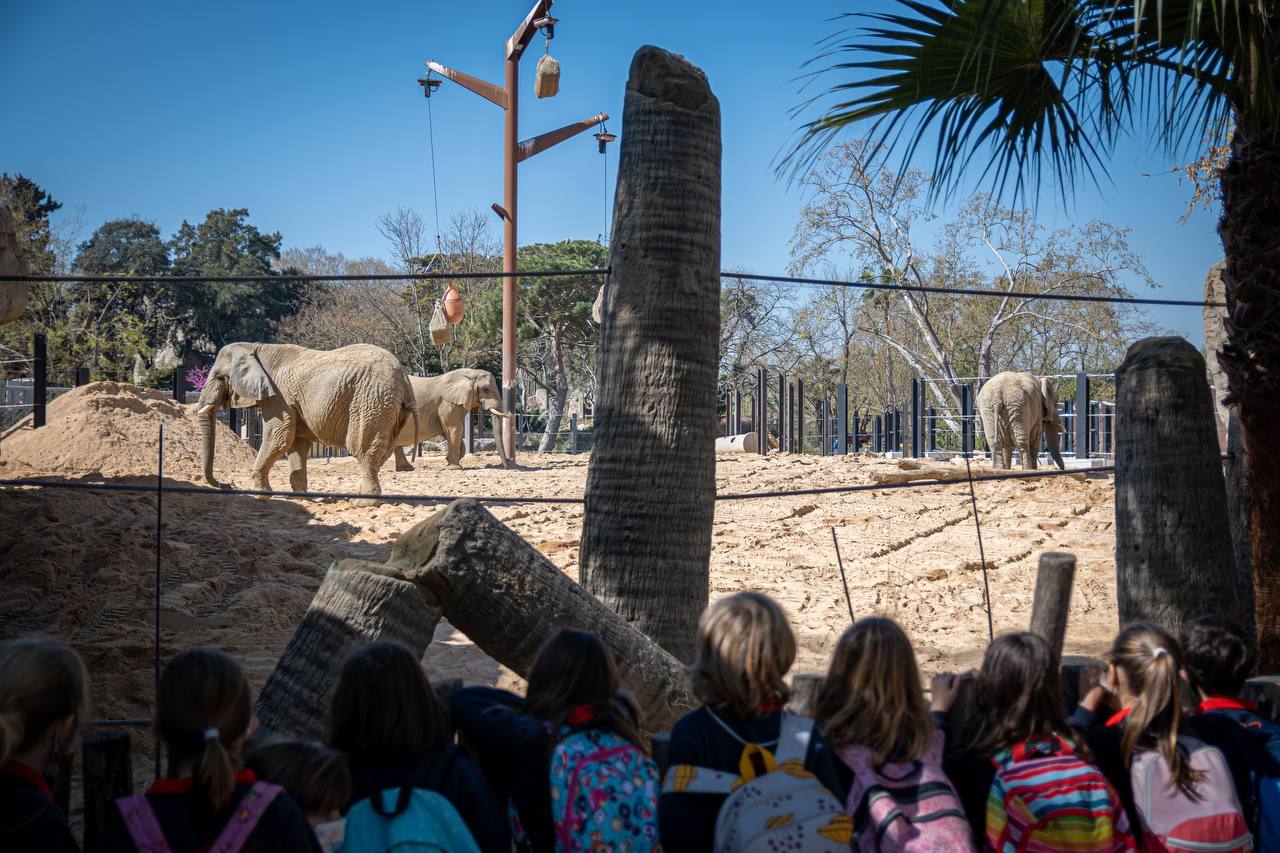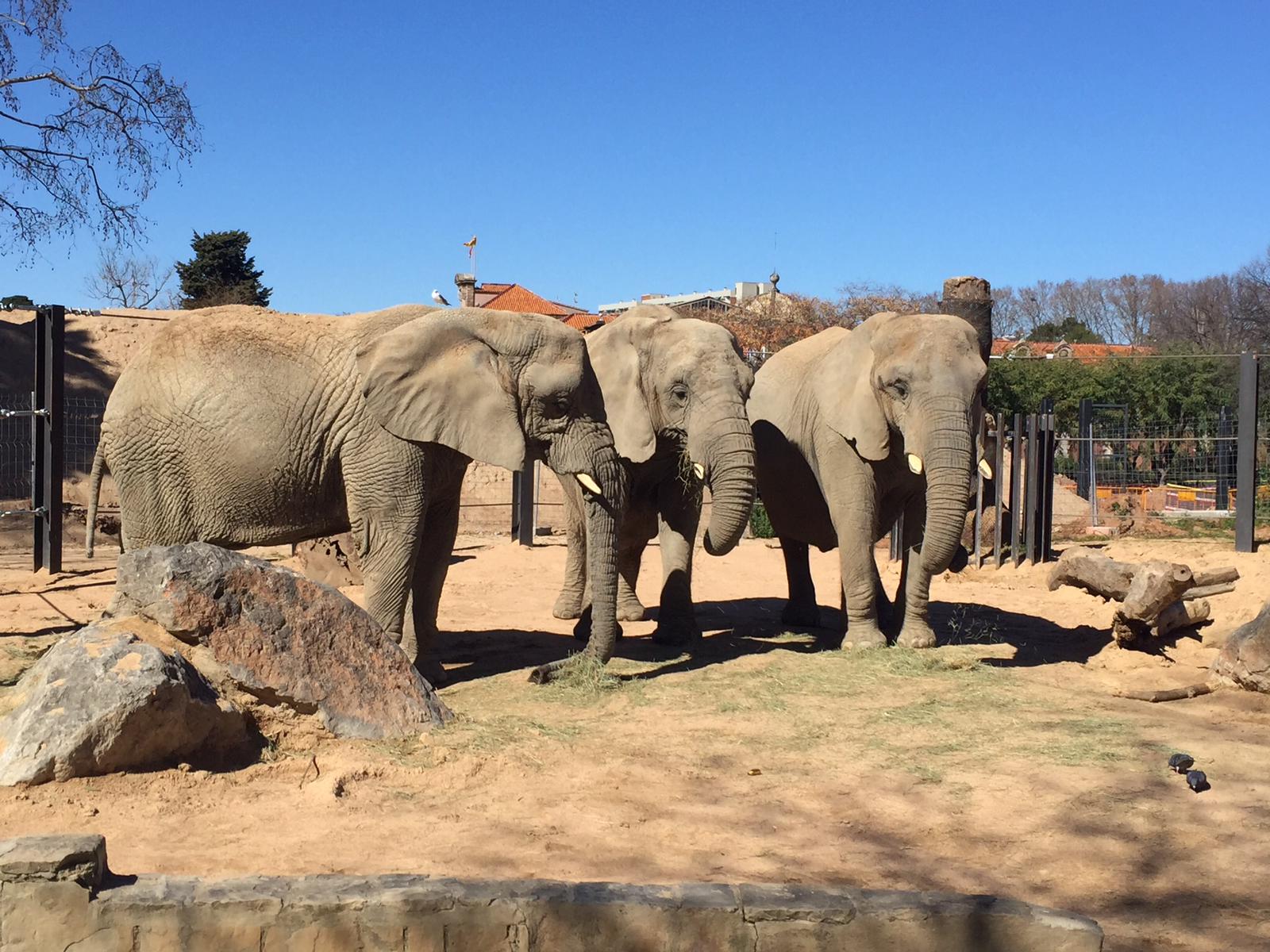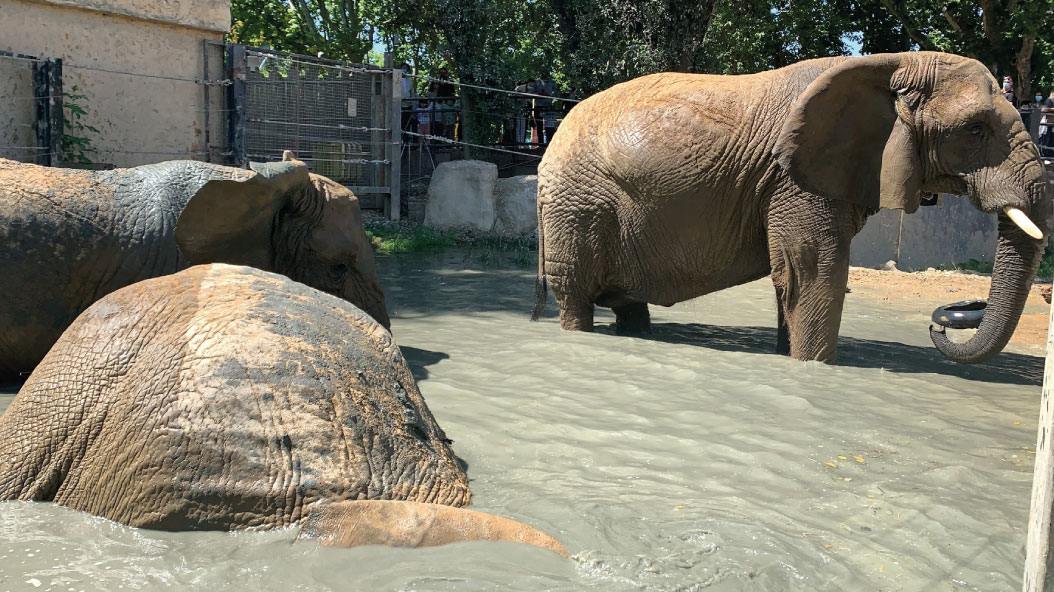Photo: Albert Pamies
We continue to work for the well-being and quality of life of our elephants Susi, Yoyo and Bully. On this occasion, through the construction of a second mud bath, where they can hydrate this summer, thereby reproducing their natural behaviour. The new mud bath complements the installation -a recreation of the elephants’ natural habitat- and introduces a new feature for their well-being, as it fosters interaction and is also beneficial, because the mud sticks to their skin and protects them from the sun and from parasites.
The last expansion of the elephant enclosure, located in the Sahel Savannah biome and continually improved in recent years, increased its surface area by 426 m2 in March. The habitat currently has a total surface area of 5.500 m2 and more improvements are planned, with the introduction of more vegetation and further enlarging it to 6.000 m2. But the installation’s size is not the only important factor for ensuring the quality of the animals’ lives. In addition to the construction of the mud bath and the successive enlargements, the installation also has other features that are essential for ensuring Susi, Yoyo and Bully's well-being. In recent years, the substrate has been improved still further by adding natural soil, which is softer and better for their joints, and interactive elements have been installed for doing medical exercises and structural elements for play and for stimulating behaviour. Furthermore, new installations providing air-conditioned shelter have been built, with natural light and free access for the animals. The installation has new integrated feeding areas that make it possible to simulate natural feeding and exploration systems.

Barcelona Zoo, a leading centre for the care of elephants
The Zoo's three elephants have been together since 2012, when Bully, who had been in a circus, was taken in. Susi arrived in 2002, having also been in a circus, while Yoyo found refuge in the Zoo in 2009, having been chained up for most of her life until then. In recent years, Barcelona Zoo has worked hard to ensure their well-being, and it has become a leading centre for the care of elderly elephants who are past their reproductive period, one of the main functions in the species’ ex-situ conservation programme.

Photo Albert Pamies
The Zoo's biologists, vets and keepers have various tools for assessing the physical and psychological state of the elephants. First and foremost, observation -they know them and can see when something isn't right and steps need to be taken- and monitoring their sleep behaviour, which is very important. Meanwhile, explorations are carried out during their regular medical exercises, and when necessary, various tests and analyses are performed, which make it possible to check that everything is as expected, taking into account their advanced age and some chronic health problems they suffer from. Various indicators, based on the Animal Welfare Quality Protocol, have made it possible for the Zoo to check that the basic points of the protocol have been met -good health, good accommodation, good food and appropriate behaviour. The indicators also respect the five freedoms principle: free of hunger, thirst and malnutrition, free of fear and distress, free of physical and thermal discomfort, free of pain, injuries and illnesses and free to express the species’ natural behaviour.
The International Union for Conservation of Nature (IUCN) has listed the African elephant as a species in danger of extinction.
Offering the animals we house the best possible conditions is a key feature of the New Zoo Model, through which the Zoo aims to become a leading centre in terms of the well-being of the animals it houses. The development of its three key areas of action -education, research and conservation- also involves a metamorphosis of the physical space, as in the case of the Sahel installation, where the three elephants are housed.




